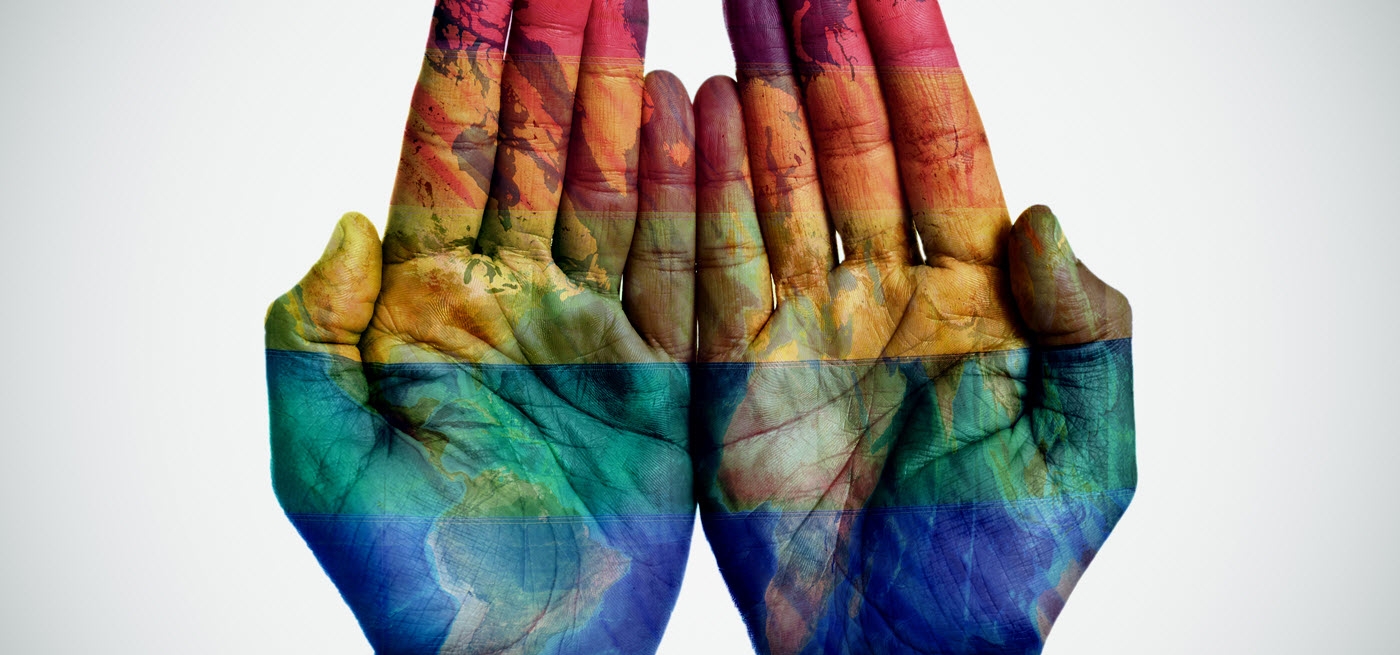
Professor Hanadi Al-Samman serves as an Associate Editor of newly published Global Encyclopedia Of Lesbian, Gay, Bisexual, and Queer (LGBTQ) History
Professor Al-Samman coordinated the articles comprising the Middle East entries. View the encyclopedia here.
Below is a Q&A with her about the endeavor. The encyclopedia is available in online as well as hard copy editions, geared primarily towards purchase by universities, schools, and libraries.
Q: What are some of the motivations and conversations that led to the publication of this volume?
A: Earlier, Gale Group had put out a 3-volume ENCYCLOPEDIA OF LESBIAN, GAY, BISEXUAL AND TRANSGENDER HISTORY IN AMERICA. As an expansion of such an initiative, the idea of an encyclopedia of global LGBTQ history, encompassing areas that would include the Middle East, South Asia, East Asia, Latin America, Africa, and Europe was an ambitious project. Having worked on literary histories of queer bodies in Arabic literature, I was invited to join as an associate editor, to oversee articles on LGBTQ histories in the Middle East. My earlier work in this area includes an essay titled “Out of The Closet” that was published in the JOURNAL OF ARABIC LITERATURE and a co-edited “Queer Affects” special issue of the INTERNATIONAL JOURNAL OF MIDDLE EAST STUDIES, which examined particularities of queer expression in Arabic literature and culture. The emphasis on affect allowed us to retain a focus on the body, on the subject - to get beyond more confined designations, such as that of nationality. As a continuation of this earlier work, I joined the encyclopedia project, and the vision - shared by the editors - was that it would be something new: a project attuned to regional specificities while seeking global commonalities. We wanted to veer away from an academic-authors-wise classification of entries, instead highlighting entries by themes, texts, artworks — so that they would more readily speak to one another across the encyclopedia.
Q: What kinds of entries, in terms of LGBTQ histories connected to the Middle East, are in the encyclopedia?
A: There are 56 entries in total, under the Middle East section that I oversaw. They span cultural movements, classical and modern histories, literature, art, and film, as well as certain attitudes and spaces concerning queer practices in the Middle East - e.g., notions of the closet and of coming out, or spaces that include queer online communities. All the area editors agreed on a core set of common thematic topics. So, there are entries in multiple geographic contexts on topics that include HIV, human rights issues, pornography and obscenity, and sex tourism. These entries are crucial, as bridges between the different areas. I was adamant, however, in my capacity as an associate editor, to steer clear of universal notions of queer culture that do not represent realities of the Middle East. If certain topics concerning LGBTQ histories did not seem readily applicable to Middle Eastern contexts, I insisted that a demand to produce entries about these topics not be forced onto the region.
Q: What were some of the challenges in your endeavor, as an associate editor for entries concerned with the Middle East?
A: A major challenge remains, pertaining to the impossibility of comprehensive coverage. This encyclopedia, and the 56 entries concerned with the Middle East, are important. But among entries concerning the Arab world, for example, the Gulf is underrepresented. So while there were challenges in finding contributors to write about certain areas, there were also logistical challenges even when I did find incredibly qualified contributors. In one instance, I approached a doctoral candidate at the Middle East Studies Association, who had given a fantastic paper that would have been a wonderful addition to the encyclopedia. Unfortunately, she could not participate in the project because she was a Turkish citizen, and due to her US visa status, she would not have been able to be paid for her work. It was non-negotiable that all contributors to this encyclopedia would be paid for their work.
Q: Towards what kinds of readers is the encyclopedia geared?
A: It is geared toward a general educated public, undergrads, researchers looking for an informed start or for a bibliography... The three-volume encyclopedia allows for various kinds of engagements, from quick skimming to more in-depth reading. Each contribution did go through a rigorous editorial process, having to pass through two reviewers and the main editor, then undergo a round of revisions, before being accepted. In the end, the encyclopedia opens up new avenues and global perspectives. One can explore, for example, the idea and practice of the closet/being closeted across regions. It’s truly “encyclopedic” in the sense that you can learn a lot! And this was the main goal - that you as a reader will discover many more connections, across the entries and beyond the pages. This is facilitated by design, in the arrangement of entries alphabetically rather than by region.
Q: What are some of the standout entries you might recommend, among those that comprise the Middle East contributions that you oversaw?
A: There are some fascinating, new theoretical insights concerning Middle East queer studies, contained in articles that include “Coming-Out/Coming-In Discourses in the Middle East,” “Pinkwashing,” “Human Rights and Queer Arab Refugees,” “Masculinity in Iranian Cinema”... And also the “ISIS Gay Trials” and “Internet Queer Sites in the Middle East” articles. I could keep going!